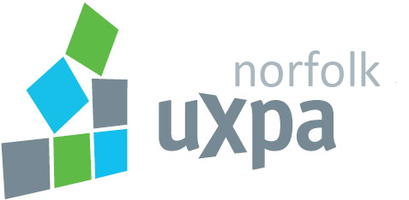VP/GM of South Hampton Roads’ The Virginian-Pilot, Maurice Jones, spoke at HRAMA’s January ‘08 luncheon event. Due to overwhelming, positive response to the subject matter, the venue was changed at the 11th hour to accommodate the approximately 125 participants. (I was there, and here are my notes.)
The topical timing turn-out yielded a sell-out crowd as Landmark Communications (the Pilot’s owner) announced last week their intention to potentially sell all or part of the company.
Maurice quoted media research source, the Scarborough Report, to tell us that the answer is “NO, Newspaper is NOT a dying medium”. A historical timeline review revealed that new media is ADDITIVE, not substitutive. Radio did NOT replace newspaper, TV did NOT replace radio, the Internet did NOT replace TV, and so on, but each successive new media launched ADDED to the prior one. (The Pilot has been in existence since 1865!)
Changes today ARE applying pressure to all traditional advertising models, used to financially support media, though. Not just newspapers are affected. Pressures are from demand for greater ROI, media fragmentation, changing consumers (wanting more control, but having less time) and disruptive technologies.
What are these “disruptive technologies” facing traditional media? Cell phones, iPods, the web, PDAs, Tivo/DVRs, video games, VOIP, VOD, XM/satellite radio, etc.
Hampton Roads is a tech savvy community as evidenced by our extremely high U.S. rankings in such measurements as growth in usage of these so-called “disruptive technologies”.
Media fragmentation has been a direct result. Just think: in the last 10-20 years, the U.S. has grown from 3 TV channels (NOTE: 4, counting PBS) to include cable TV and 250+ channels, 0 web sites to 100M+. There’s also the explosion in numbers of radio stations (even more when including HD and internet radio) and the preponderance of niche print publications available (some represented by V-P’s Targeted Publications + Media). Locally, we still have only 2 daily newspapers, Southside’s Virginian-Pilot and the Peninsula’s Daily Press.
The consumer audience has changed dramatically, too.
Newspapers as well as network and local TV/radio has lost reader/viewership. Cable primetime news has declined substantially since 2003 despite a 150+% gain in the five years prior. And, of course, internet growth continues to spiral upward.
According to Maurice, the question should be NOT “Is Newspaper a Dying Medium?”, but “What is a Newspaper?”
The definition is broad among adults (18+). Some circulation stats for the Virginian-Pilot: 47% read daily, 60% read Sunday, 72% read the paper at some point over the past week. Add 10% to any of these numbers for PilotOnline.com viewership.
In contrast, the 2007 Super Bowl reached an audience of only 42%, which is the biggest ad day on TV. Hmmm….
Every day at the Virginian-Pilot offers better reach than Super Bowl Sunday.
Recently, the Virginian-Pilot has accomplished a major redesign in print and online to meet and exceed the change in consumer wants and needs. The Pilot’s online offerings serve 1M unique visitors every month, representing the largest usage in all of Hampton Roads, not just Southside.
PilotOnline.com was ranked 6th best access in the country. That means there are only 6 other metro regions’ newspapers in the U.S. ranked better for online news access.
The Virginian-Pilot is not just a newspaper company. It’s news, information and advertising, too.
The definition of a newspaper has truly changed. Newspapers fuel consumer power, giving information to do what you want to do.
The Virginian-Pilot has been voted the best newspaper in Virginia 21 of the last 22 years by the Virginia Press Association (VPA) and won 3 Pulitzer Prizes. PilotOnline.com was one of the first newspaper websites in the country, and LINK (providing condensed news and entertainment) was one of the first free dailies.
The Pilot is journalistic excellence with a local impact, an impact which means something personally to each and every individual in Hampton Roads.
A few more stats regarding the Virginian-Pilot: most used ad medium, most valuable in planning shopping, best for bringing sales to consumer’s attention.
Newspaper is becoming agnostic. There are more geographically zoned products and more targeted publications such as the ethnically-focused MIX Magazine, launched August ’07.
The Virginian-Pilot is also the largest publisher of military newspapers in the country. Pilot Direct, V-P’s direct marketing business, is the fastest growing segment of the company. Following closely are V-P’s online products, such as HamptonRoads.tv, which is typically a difficult segment to monetize. And, they’re moving into mobile products as well.
The Virginian-Pilot, as an aggregated audience solution, reaches 93% of South Hampton Roads adults every week.
Newspapers are Alive, Well . . . and Changing
It’s still the most powerful media product in the market.
Questions? and, Answers
Yes. One day (in Maurice’s opinion) the core Virginian-Pilot product will be free versus the current paid subscription model. The ability to obtain free content is enormous, and the move in media is to “free”.
Yes. The production plants are undertaking green initiatives and building on these.
Yes. The Pilot is working on integrated “multimedia” sales and marketing packages for its diverse products versus the “silo” of sales teams by product used now. This is a historical and cultural shift.
Why are you selling? Publishing is only 15% of Landmark’s holdings. The Weather Channel is driving Landmark Communications’ decision involving the sale of the Virginian-Pilot. Think of it as “beach front property”; sell when the selling is good.
Monday, January 14, 2008
“Is Newspaper a Dying Medium?”, the program
Posted by
Missy Schmidt
at
5:17 PM
![]()
Labels: AMA, media, print, Virginian-Pilot
Subscribe to:
Post Comments (Atom)





















No comments:
Post a Comment